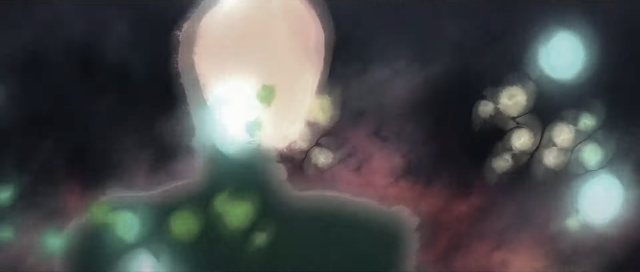Changing Your Fate: An Analysis Of ‘Akakiri’
“You cannot escape your destiny."
This is what Obi-Wan Kenobi says to Luke Skywalker in Return of the Jedi when he tells him that he must confront his father again. The idea of "destiny" has always been interesting in Star Wars. In a few cases, a person's destiny is presented as being concrete and unchangeable, such as with the prophecy of the Chosen One and how Anakin Skywalker still manages to destroy the Sith despite falling to the dark side. But in other cases, destiny is merely a construct put upon someone they can alter, such as with Kylo Ren killing Snoke in The Last Jedi despite Snoke envisioning him killing Rey. But in “Akakiri”, the final short in the anime anthology series Star Wars: Visions, "destiny" is presented as a self-inflicted curse.
This short follows the Jedi Knight Tsubaki as he aids his secret lover Princess Misa, whose world is being overthrown by a member of the royal family seduced by the dark side. Tsubaki is plagued by a recurring vision of someone being killed repeatedly throughout their journey to locate and defeat the Sith Lord. Despite his master warning him that his feelings for Misa would interfere with his mission, Tsubaki is determined to liberate Misa's world. However, his obsession with protecting the one he loves ultimately becomes his undoing.
RELATED: The True Greatest Tragedy Of Darth Vader Revealed
When Tsubaki and Misa finally find the Sith, she is revealed to be the king's sister, Masago. Taking Misa as her hostage, Masago briefly duels Tsubaki before using the Force to replay the vision in his mind. As he falls to his knees in fear and dread, Masago tells the Jedi, "There is nothing that has not been fated." With his master's warning echoing in his head, Tsubaki hears the exact words that so many other characters in Star Wars have heard before. "It's destiny." But unlike Luke, Rey, or Obi-Wan, Tsubaki rejects this notion as he shouts, "No, it's not!" and returns to his feet.
His strength renewed, Tsubaki fights his way through Masago's foot soldiers until he strikes down the final one. But unlike the others, this one cries out in a familiar voice before falling at Tsubaki's feet. Realizing what he's done, Tsubaki removes the soldier's mask, only to find the face of Misa. Masago had dressed her up as one of her warriors and used the Force to push her forward, manipulating the Jedi into slaying her in his angered state. In trying to prevent his fated vision from occurring, Tsubaki had killed the very woman he'd wished to protect.
As he sobs over his slain lover, Tsubaki is given an ultimatum by Masago. In exchange for his service, she offers to train the Jedi in the ways of the dark side, giving him the power to save Misa's life. Desperate to save Misa, Tsubaki kneels before Masago and pleads, "Help me save her, my master." The Sith Lord does so, lending her power to Tsubaki and allowing him to heal Misa and restore her to life. As Masago ushers Tsubaki to come with her, Misa tearfully asks him what he did, to which he can only respond, "I did what had to be done" before departing with his new master.
The parallels between this story and Revenge of the Sith are clear, with Anakin and Tsubaki fighting to prevent their partners' envisioned deaths. But in trying to save them, they end up causing their deaths and selling their souls to the dark side. Anakin and Tsubaki are so focused on changing their fates that they fail to see how their actions harm the ones they love, their motives slowly turning from love to control. In this way, their falls become self-fulfilling prophecies, motivated by fear and lack of forethought, leading them to become the very things they swore to destroy.
Depending on the story, the idea of fate and how permanent it is often varied in Star Wars. But with both “Akakiri” and Revenge of the Sith, it is nothing short of divine punishment placed upon those who refuse to believe that they could ever fall to the dark side.
READ NEXT: Meet The Heroes Behind 'Star Wars: Visions'




